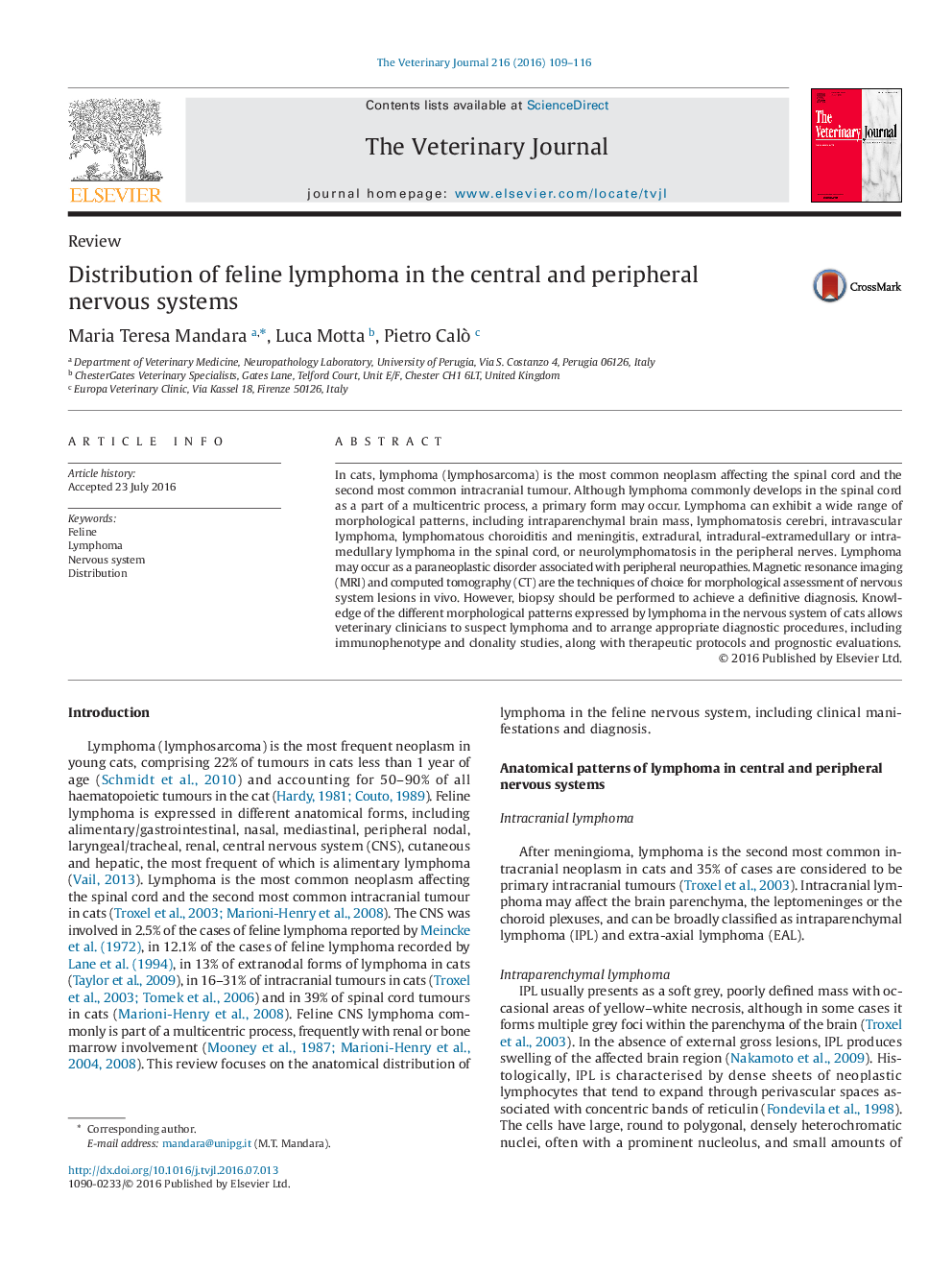| Article ID | Journal | Published Year | Pages | File Type |
|---|---|---|---|---|
| 2463639 | The Veterinary Journal | 2016 | 8 Pages |
•Feline nervous system lymphosarcoma (lymphoma) exhibits a range of patterns of distribution.•Lymphoma is the most common neoplasm affecting the spinal cord.•Diagnostic imaging may allow feline nervous system lymphoma to be differentiated from other feline nervous system disorders.•Some forms of feline nervous system lymphoma can be diagnosed by cytology and biopsy.
In cats, lymphoma (lymphosarcoma) is the most common neoplasm affecting the spinal cord and the second most common intracranial tumour. Although lymphoma commonly develops in the spinal cord as a part of a multicentric process, a primary form may occur. Lymphoma can exhibit a wide range of morphological patterns, including intraparenchymal brain mass, lymphomatosis cerebri, intravascular lymphoma, lymphomatous choroiditis and meningitis, extradural, intradural-extramedullary or intramedullary lymphoma in the spinal cord, or neurolymphomatosis in the peripheral nerves. Lymphoma may occur as a paraneoplastic disorder associated with peripheral neuropathies. Magnetic resonance imaging (MRI) and computed tomography (CT) are the techniques of choice for morphological assessment of nervous system lesions in vivo. However, biopsy should be performed to achieve a definitive diagnosis. Knowledge of the different morphological patterns expressed by lymphoma in the nervous system of cats allows veterinary clinicians to suspect lymphoma and to arrange appropriate diagnostic procedures, including immunophenotype and clonality studies, along with therapeutic protocols and prognostic evaluations.
